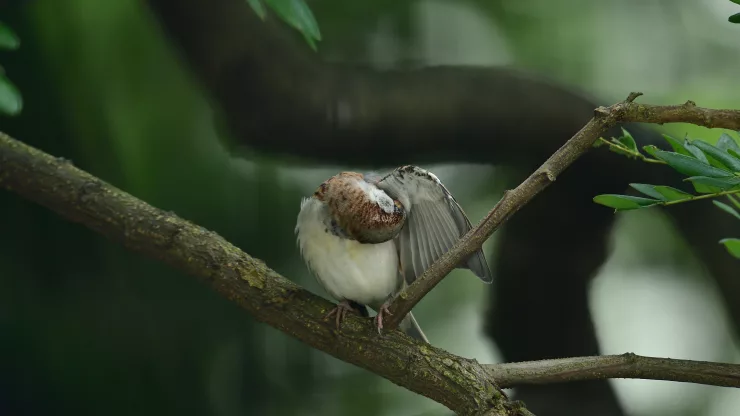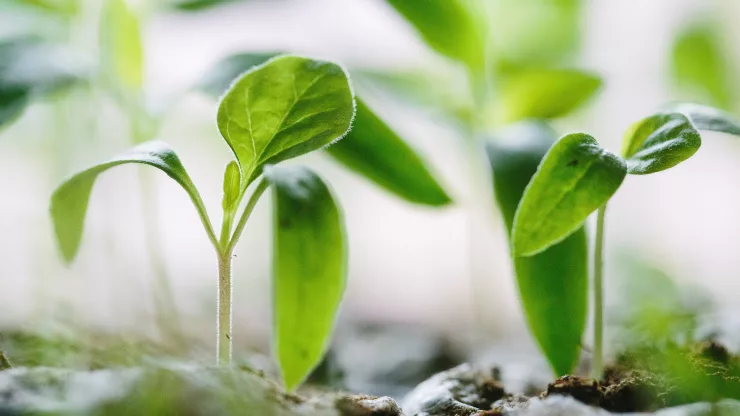As cities continue to grow and expand, it is essential to create sustainable systems that support both urban wildlife and agriculture.
By integrating green spaces and promoting sustainable food practices, cities can create vibrant ecosystems that benefit both humans and animals alike.
In this article, we will explore the importance of sustainable urban wildlife and agriculture systems, the challenges of creating them, and strategies for implementing them.
Jump to Section
Introduction
Urbanization has led to the loss of natural habitats for many species, as well as a disconnection between people and the food they eat.
However, there is a growing movement towards urban wildlife and agriculture that aims to create more sustainable systems.
By bringing nature into the city and promoting locally grown food, we can create healthier, more resilient communities.
Defining Urban Wildlife and Urban Agriculture
Urban wildlife refers to the animals that live in and around cities, including birds, squirrels, raccoons, and even coyotes.
Urban agriculture involves growing food in urban areas, often in community gardens or on rooftops.
The Importance of Sustainable Systems
Creating sustainable urban wildlife and agriculture systems has numerous benefits, both for people and the environment.
Benefits of Urban Wildlife and Urban Agriculture
- Improving air and water quality by increasing green spaces and reducing the use of pesticides and fertilizers
- Providing opportunities for education and community building through gardening and wildlife watching
- Promoting healthy eating habits by increasing access to fresh, local produce
- Supporting biodiversity by creating habitats for native species
Challenges of Creating Sustainable Systems
However, there are also challenges to creating sustainable urban wildlife and agriculture systems. These include:
- Limited space and resources in urban areas
- Difficulty in finding suitable land for green spaces and gardens
- Potential conflicts between humans and wildlife, such as urban coyotes or rats
- Lack of funding and support from local governments
Strategies for Creating Sustainable Urban Wildlife and Agriculture Systems
Despite these challenges, there are several strategies that cities can use to create more sustainable systems.
1. Integrating Wildlife Habitats into Urban Landscapes
By incorporating green spaces into urban landscapes, cities can create habitats for a variety of wildlife species.
This can include creating wildlife corridors, planting native plants, and providing food and water sources.
2. Encouraging Community Gardens and Urban Agriculture
Community gardens and urban agriculture can provide fresh, healthy food for residents while also promoting community building and education.
Cities can support these initiatives by providing land, resources, and funding.
3. Promoting Sustainable Food Practices
Cities can also promote sustainable food practices by encouraging local food production, reducing food waste, and supporting farmers markets and other local food initiatives.
4. Implementing Green Infrastructure
Green infrastructure, such as green roofs and rain gardens, can help reduce stormwater runoff and improve water quality.
These practices can also provide habitat for wildlife and promote biodiversity.
5. Collaborating with Local Government and NGOs
Finally, collaboration between local government and NGOs can help create more sustainable urban wildlife and agriculture systems.
This can involve working together to identify suitable land for green spaces, providing funding and resources, and promoting education and outreach.
Case Studies: Successful Urban Wildlife and Agriculture Systems
Several cities have successfully implemented sustainable urban wildlife and agriculture systems. Below are three examples:
Example 1: Chicago, IL
In Chicago, the Green Roofs program has installed over 500 green roofs on buildings throughout the city.
These roofs help reduce stormwater runoff, improve air quality, and provide habitat for birds and insects.
Example 2: Vancouver, Canada
Vancouver has implemented a Green Streets program that involves planting native trees and shrubs along city streets.
This has helped improve air quality and provide habitat for urban wildlife.
Example 3: Detroit, MI
Detroit has seen a surge in community gardens and urban agriculture initiatives in recent years.
Groups like Detroit Black Community Food Security Network and Keep Growing Detroit are working to promote healthy, sustainable food practices in the city.
The Future of Sustainable Urban Wildlife and Agriculture Systems
As cities continue to grow and expand, it is essential that we create more sustainable systems that support urban wildlife and agriculture.
By integrating green spaces and promoting sustainable food practices, cities can create healthier, more resilient communities.
The future of sustainable urban wildlife and agriculture systems is bright, as more and more cities recognize the importance of these initiatives.
FAQ
What are some benefits of urban agriculture?
Urban agriculture can provide fresh, healthy food for residents while also promoting community building and education.
It can also reduce carbon emissions by reducing the transportation distance between food production and consumption.
How can cities integrate wildlife habitats into urban landscapes?
Cities can create wildlife corridors, plant native plants, and provide food and water sources for wildlife.
They can also incorporate green roofs and rain gardens into building design to provide habitat for birds and insects.
What are some challenges to creating sustainable urban wildlife and agriculture systems?
Challenges include limited space and resources in urban areas, difficulty in finding suitable land for green spaces and gardens, potential conflicts between humans and wildlife, and lack of funding and support from local governments.
I’m a nature enthusiast and creator of Metro Wilds and have spent years exploring the great outdoors.
With a passion for environmental conservation and sustainability, I have dedicated my career to writing about the beauty and wonders of nature, as well as the threats facing our planet.
Contact me at [email protected] for assistance.





